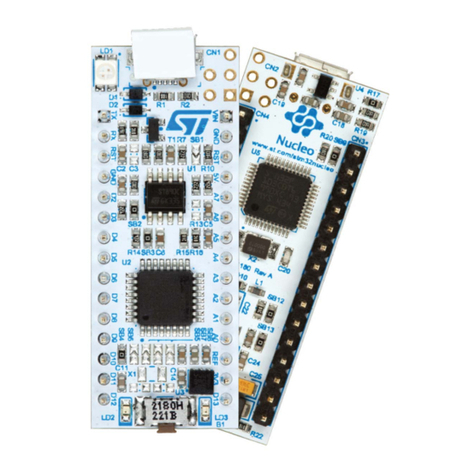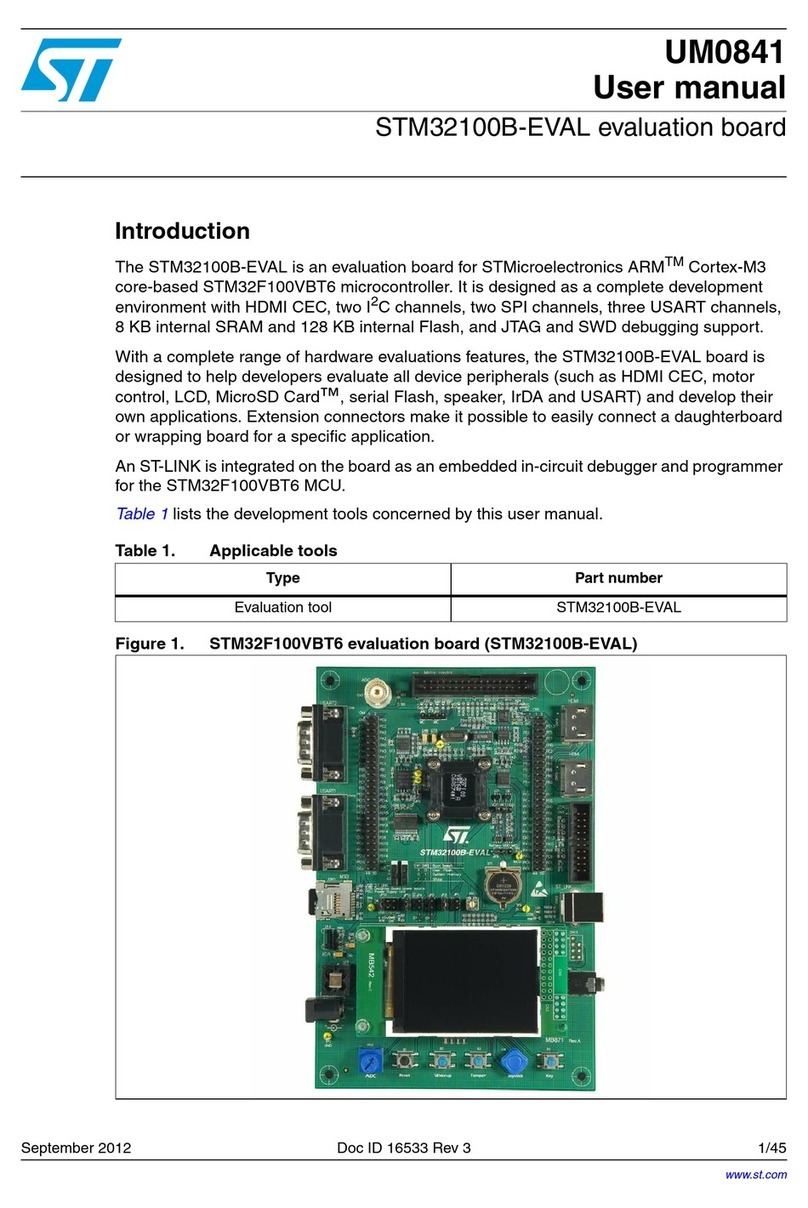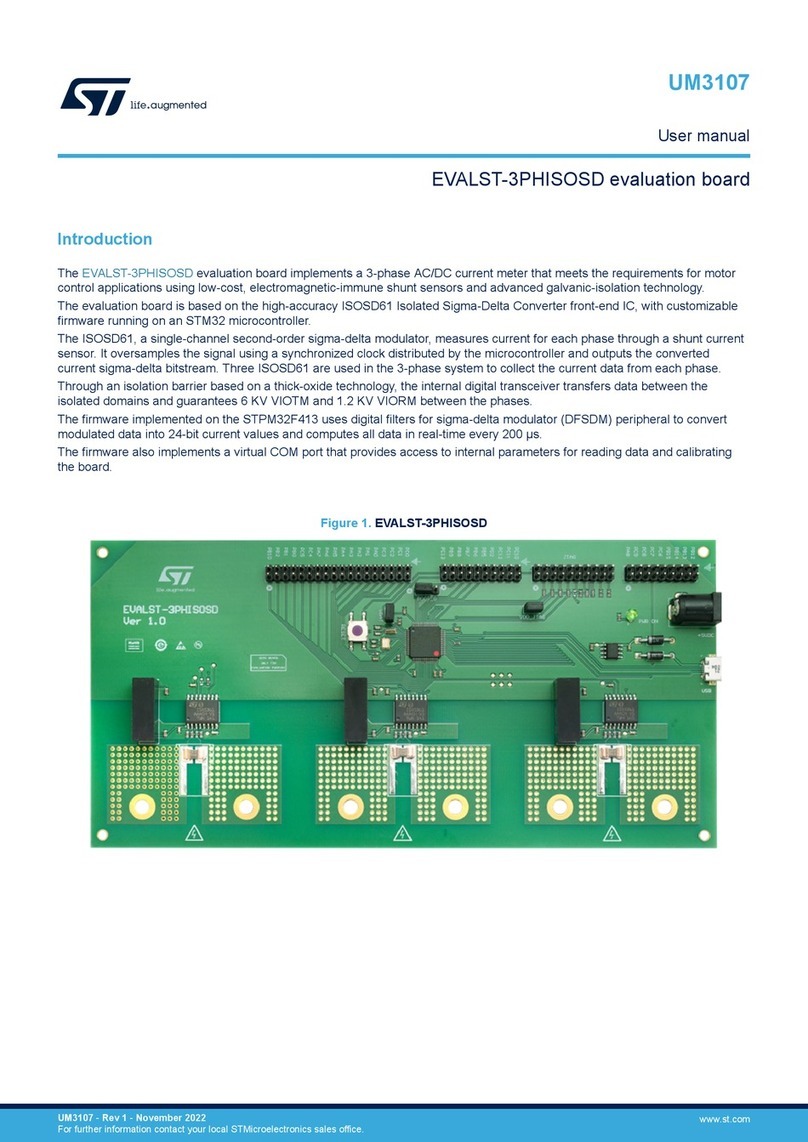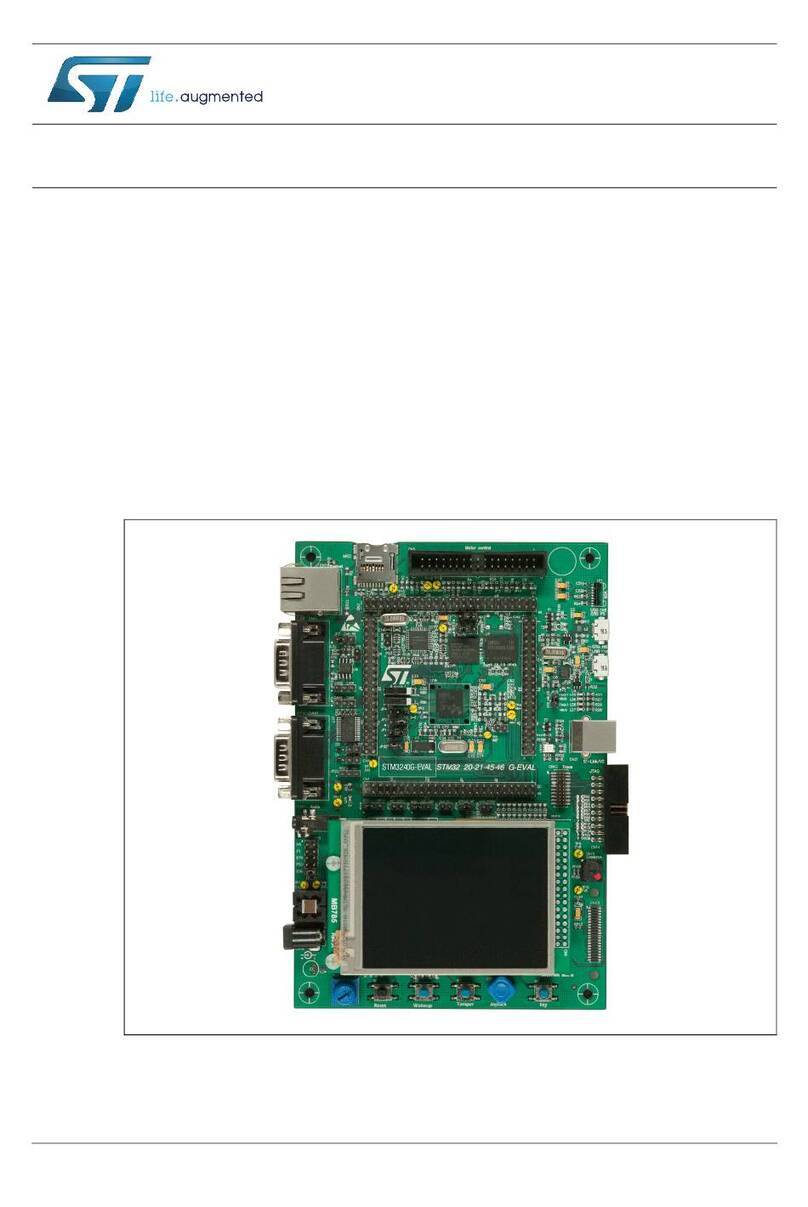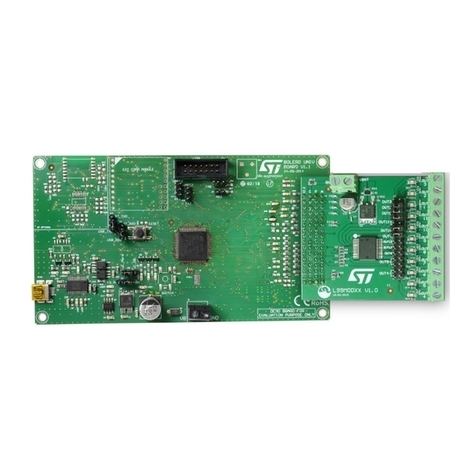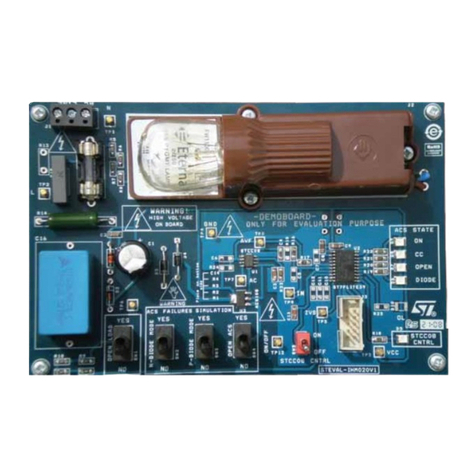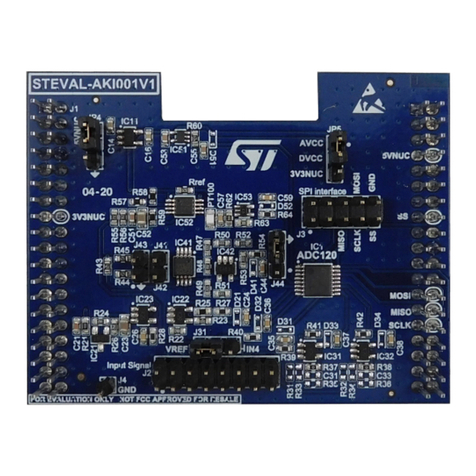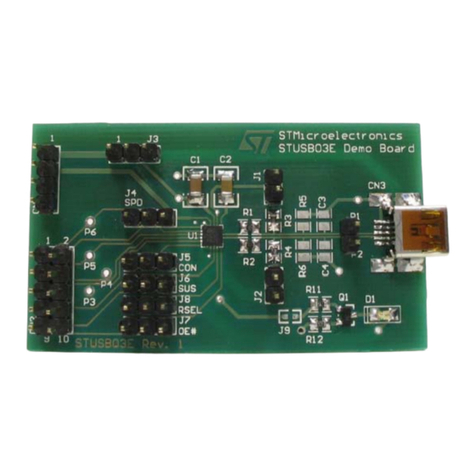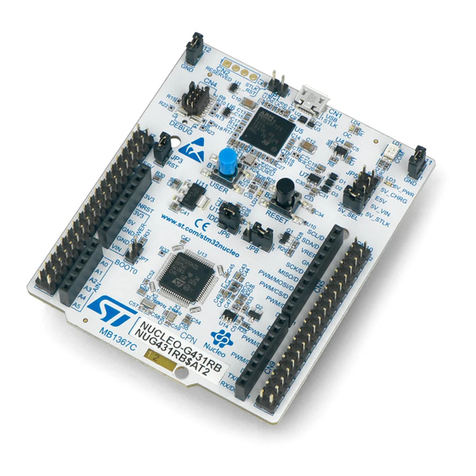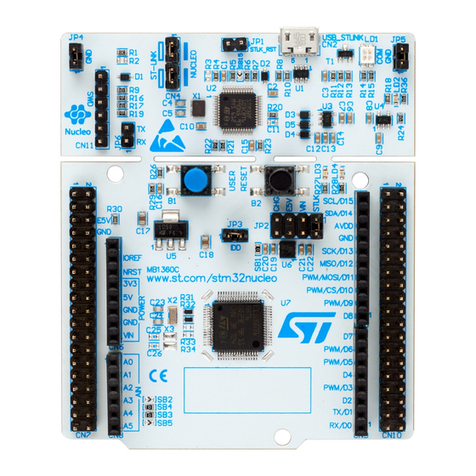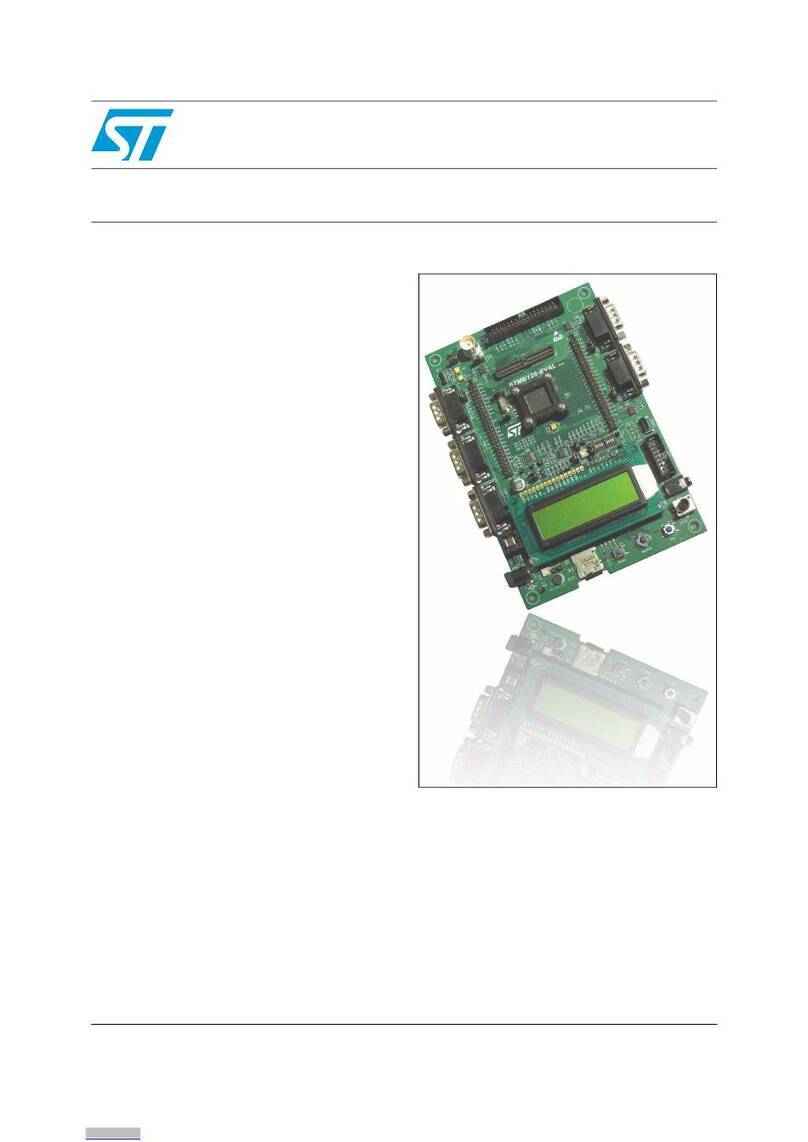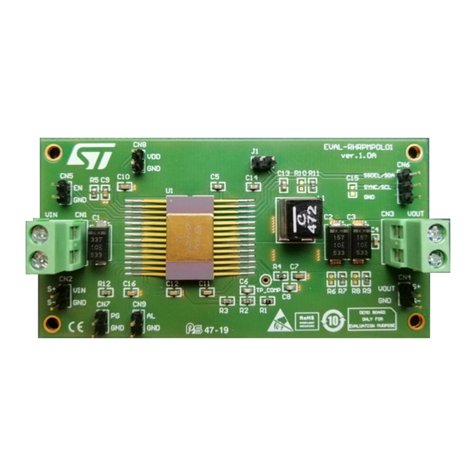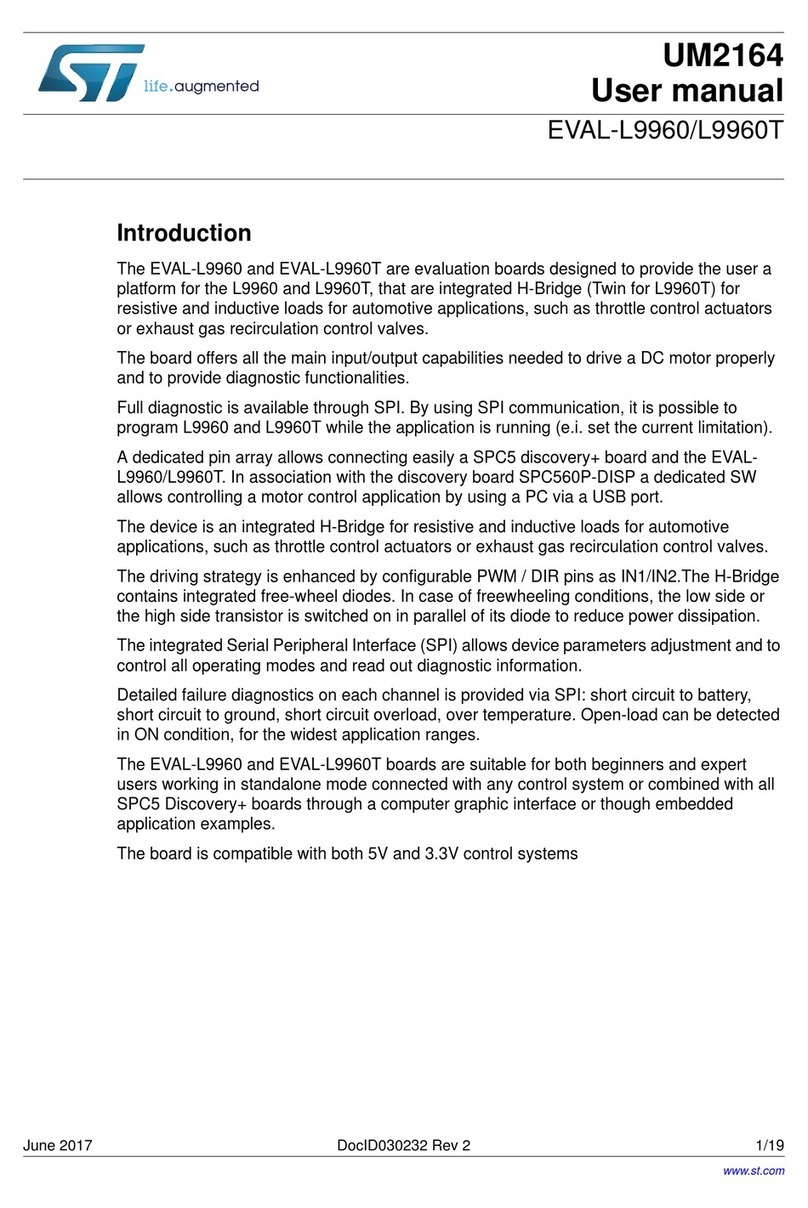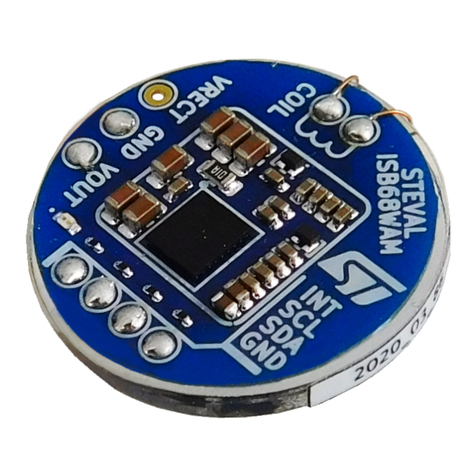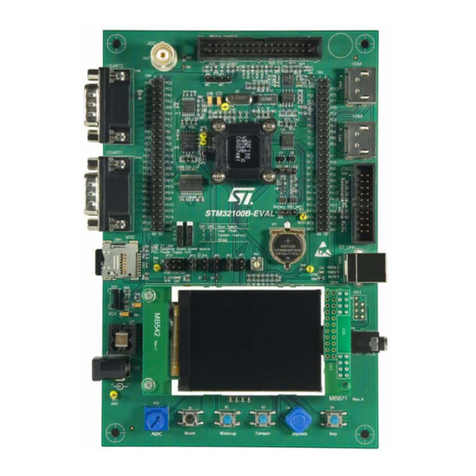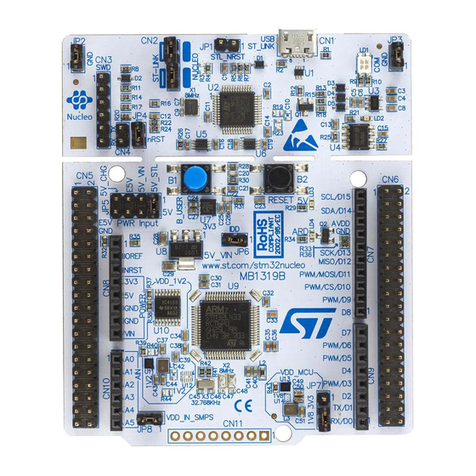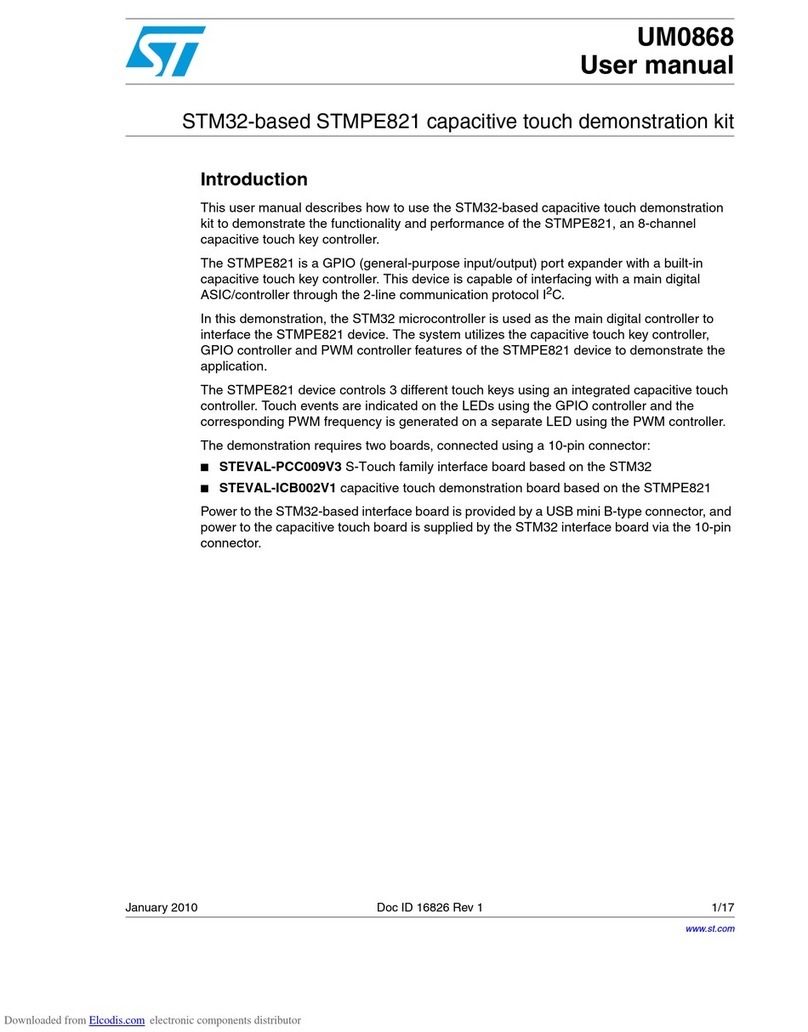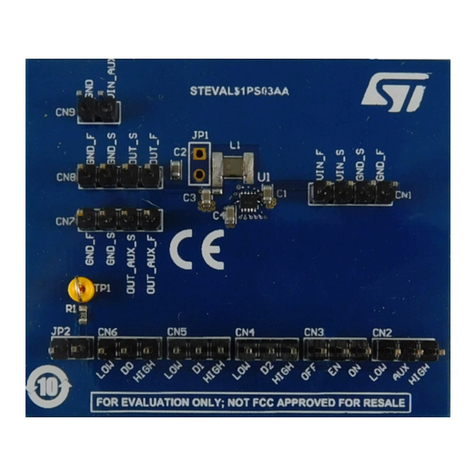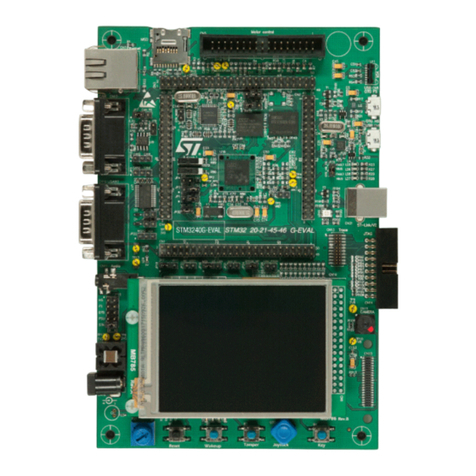
Table 4. STM32MP157F-EV1 overview
Position Description
1 MB1262 mother board
2 MB1263 daughterboard
3MB1230 DSI (MIPI® standard) 720p display
4 MB1379 daughterboard camera
5microSD™ card
Table 5. MB1263 daughterboard overview
Position Description Position Description
50 (B1) Reset button 59 (CN1) MB1263 power 5 V-3 A
51 (LD2) User LED (red) 60 (SW1) Boot mode selection
52 (B2) User button (PA13) 61 (U3) PMIC (STPMIC1A)
53 (LD3) User LED (green) 62 (LD6) ST-LINK LED (bicolor)
54 (B3) User button (PA14) 63 (CN4) USB Micro-B (ST-LINK/V2-1)
55 (LD5) User LED (blue) 64 (U4) STM32MP157FAA1 LFBGA448
56 (LD4) User LED (orange) 65 (U5) eMMC
57 (B4) Wake-up button 66 (U6/U7) 2 x DDR3L 16 bits
58 (LD1) Power LED (green) 67 (µSD)microSD™ 3.0 card (back side slot)
Table 6. MB1262 mother board overview
Position Description Position Description
10 (CN3) Ethernet 11 (CN8) Microphone MEMS daughterboard connector
12 (CN4) Speaker audio output 13 (CN5) Headset audio output
14 (U8) Audio codec (Wolfson WM8994) 15 (CN1) SPDIF RX
16 (CN2) SPDIF TX 17 (U5) Smartcard (back side slot)
18 (LD1) Ethernet LED (green) 19 (CN6) Ethernet daughterboard connector
20 (U10) Trace connector 21 (CN11)LTDC LCD TFT display controller (STM32
specific) connector
22 (CN12) RS-232 (UART4) 23 (CN13) External E2P connector
24 (CN16) USB Micro-AB (USB OTG) 25 (LD2) USB OTG LED (green)
26 (LD3) USB Type-A port LED (red) 27 (CN17) MFX header 4 pins
28 (CN14) JTAG connector 29 (CN15) CAN FD
30 (CN18) 2 USB Type-A port (host) 31 (CN20) 2 USB Type-A port (host)
32 (B2) Reset button 33 (B1) Joystick
34 (CN22) Motor control connector 35 (CN21) GPIO expansion connector
4 (CN7) Camera sensor connector - -
UM2648
Hardware layout and configuration
UM2648 - Rev 1 page 10/61
